There are 38 types of scorpions that can be seen in Arizona.
Scorpions are arachnids in the Scorpions family with eight legs and sharp pincers. They also have a segmented tail, that is narrowly carried forward in a curve with a stinger.
Most species are not a threat to humans with healthy adults seldom needing medical treatment after being stung.
Want to know more about the scorpions in Arizona? Continue reading to find out more.
Are There Poisonous Scorpions In Arizona?
Only one of the 38 scorpions you can come across in Arizona is considered venomous, that is the Arizona bark scorpion, it is the only scorpion that has a venom that is strong enough to cause serious symptoms.
They are often found in homes, especially during the summer months.
Scorpions In Arizona
The 38 types of scorpions you may come across in Arizona, include:
1. Stripe-tailed Scorpion

Scientific name: Paravaejovis spinigerus.
Common name: stripe-tailed scorpion, devil scorpion.
The stripe-tailed scorpion is a medium-sized scorpion with adults reaching 7cm.
They have brown to tan stripes on the back of their tails, their tails are thicker than the bark scorpion, which helps you differentiate the two.
Some have a golden brown to light yellow base color which is covered in dusky patches on the tail.
They can be seen in the Sonoran desert, hiding under rocks, in shoes, and sleeping bags.
2. Arizona Bark Scorpion

Scientific name: Centruroides sculpturatus.
Common name: Arizona bark scorpion.
The Arizona bark scorpion is light brown and common in the Sonoran desert with adults reaching 8cm with females around 1cm smaller.
They are nocturnal and adapted for the desert habitat with a waxy exoskeleton to reduce water loss.
These scorpions hide during the day under rocks and tree bark, they are common in homes during the summer months.
They are strange creatures that prefer to hang upside down, which is the main reason why people get stung, not realizing the scorpion is hidden under the object that they pick up.
This is the most venomous scorpion in North America and the venom causes pain, numbness, vomiting, and tingling in adults, which can last up to 72 hours.
It’s not uncommon for the sting area to become immobilized, some people may experience convulsions and/or loss of breath.
There have been two recorded fatalities from an Arizona bark scorpion in Arizona since 1968, while the number of stings each year is believed to be in the thousands.
3. Arizona Desert Hairy Scorpion
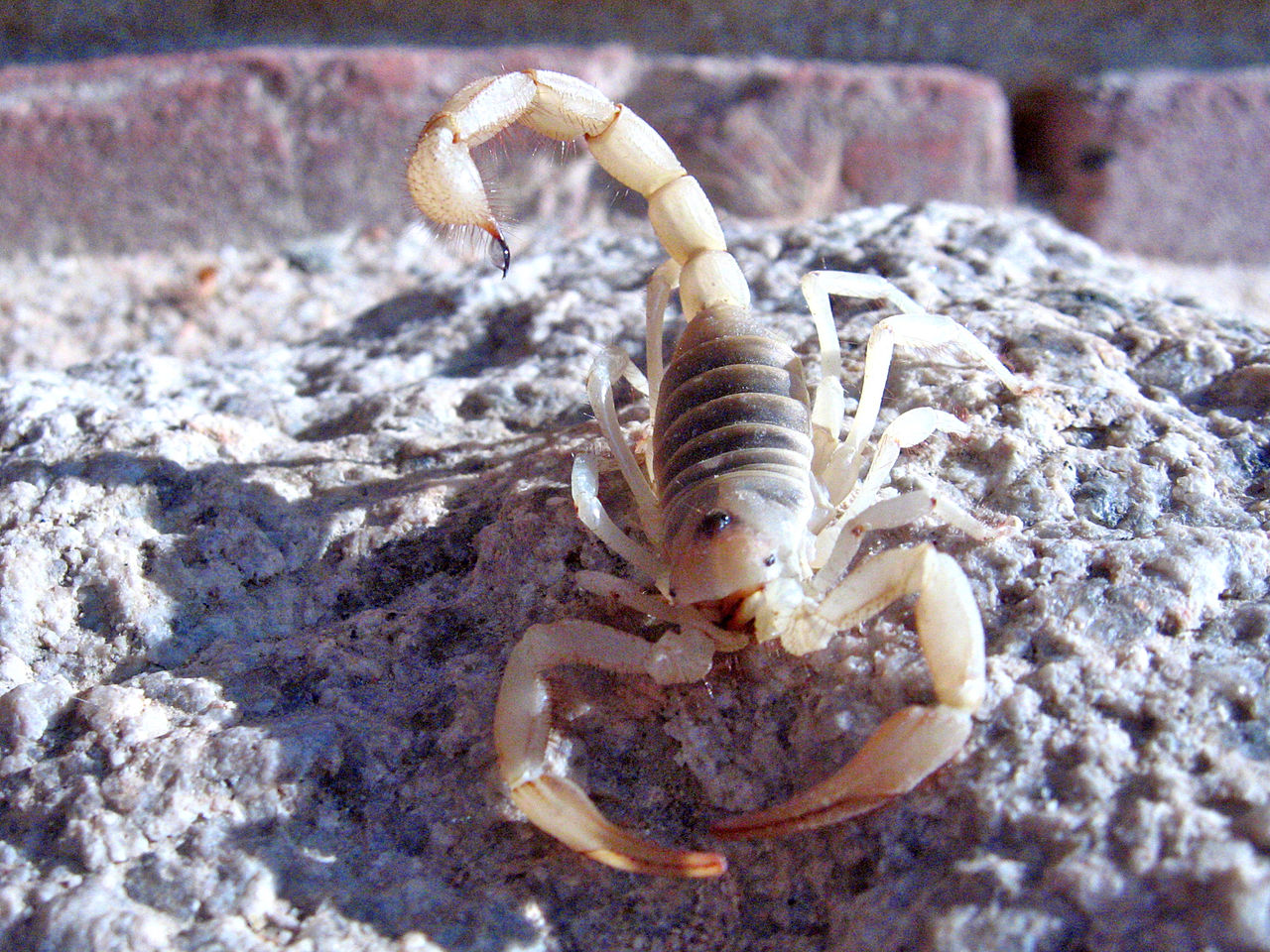
Scientific name: Hadrurus arizonensis.
Common name: giant desert hairy scorpion, giant hairy scorpion, Arizona desert hairy scorpion.
The Arizona desert hairy scorpion, also known as the giant desert hairy scorpion is the largest scorpion you can find in North America, growing up to 5.5 inches (14cm in length).
They usually have a yellow underside and dark on the top with strong and powerful pincers and hairs that cover their entire body.
This is a burrowing scorpion that is often found under rocks, which have moisture.
They are active and very aggressive.
They do give a very painful sting, but it is not toxic enough to be fatal to humans, though it is possible for an allergic reaction to occur, as with any sting, which will require medical attention.
4. Yellow Devil Scorpion
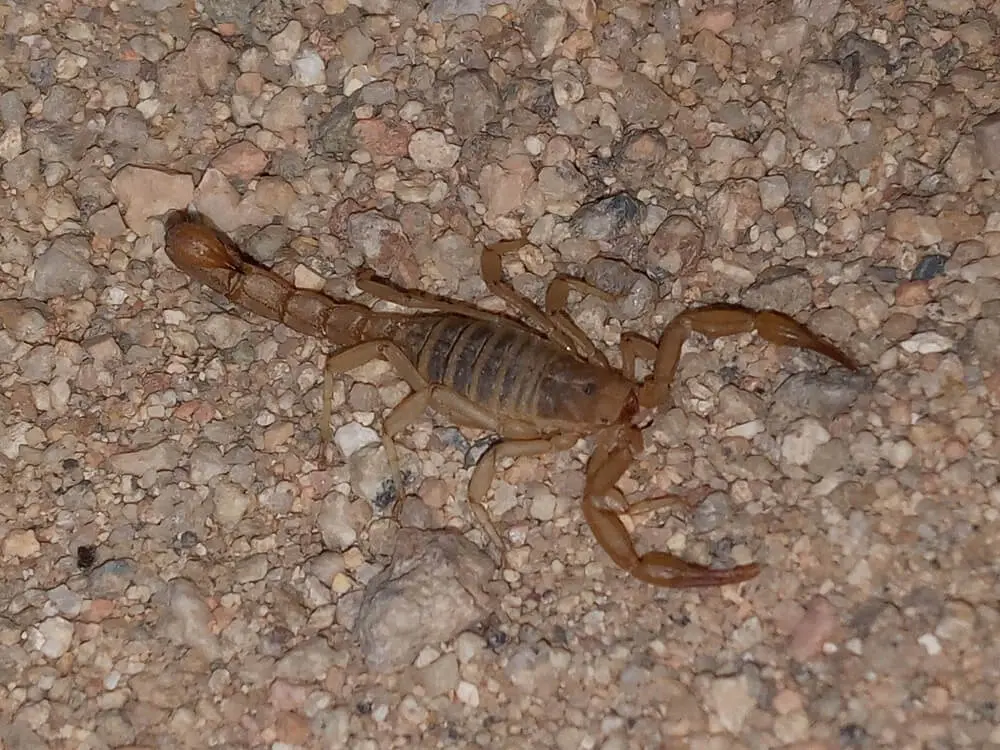
Scientific name: Paravaejovis confusus.
Common name: Yellow devil scorpion.
The yellow devil scorpion is a small scorpion that can be found in the dry areas of Arizona. Most observations are made in June and September.
5. Superstition Mountains Scorpion

Scientific name: Superstitionia donensis.
Common name: Superstition mountains scorpion.
This scorpion was first discovered in Arizona, back in 1940 living in the mountain terrain of the Superstition Mountains.
They prefer hiding under rocks or close to plants in a desert habitat.
There has been extensive research on this scorpion’s venom, which is different from the other species, but is not more venomous and will cause pain, swelling, and redness.
6. Pseudouroctonus santarita
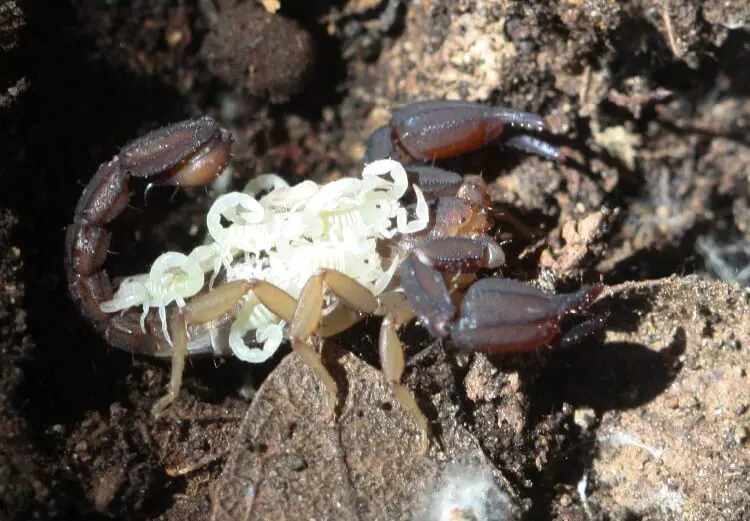
This scorpion is a member of the Vaejovidae family and can be found in the Santa Rita Mountains in Arizona.
They are small scorpions that hide during the day, hunting at night, which means there have been very few observations to date.
7. Arizona Smoothclaw Scorpion
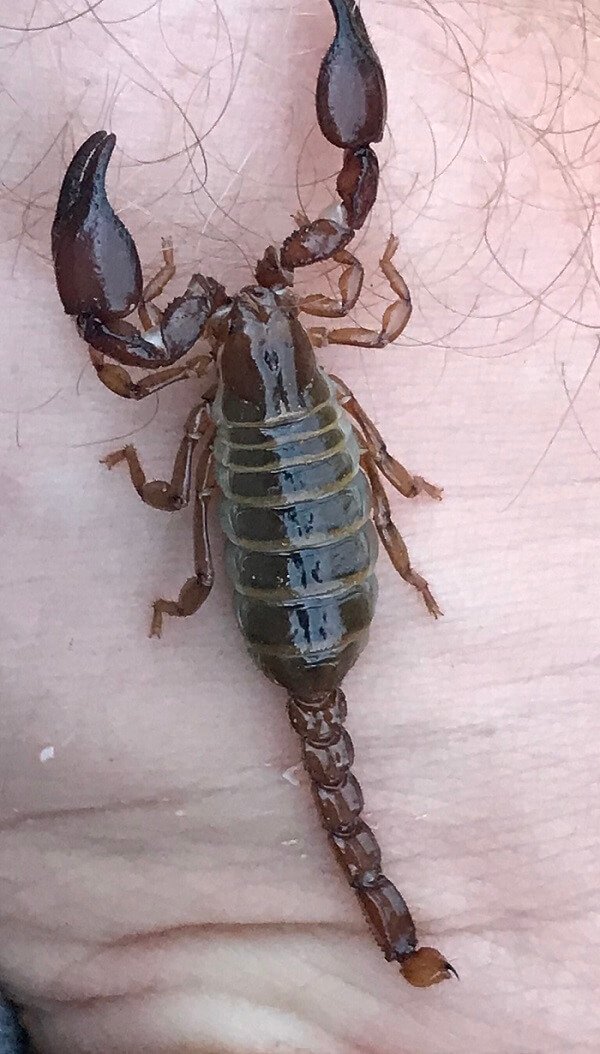
Scientific name: Diplocentrus spitzeri.
Common name: Arizona smoothclaw scorpion.
The Arizona smooth claw scorpion can grow up to 5.2cm in length with brown body color and yellow on its legs.
They can be found throughout Arizona, hiding under rocks, bark, and leaf litter during the day.
8. Pseudouroctonus apacheanus
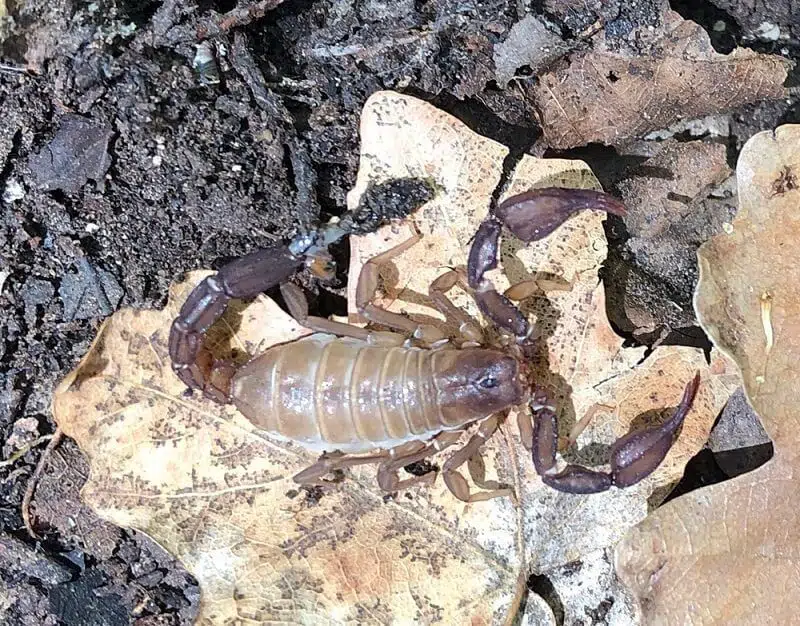
This scorpion can be found in the Baboquivari Mountains in Southern Arizona.
They are very rare and seldom seen, which is why there is such limited information on this species.
They are distributed from southern Arizona to New Mexico and northern Mexico.
9. Dune Scorpion

Scientific name: Smeringurus mesaensis.
Common name: Dune scorpion, giant sand scorpion.
The dune scorpion is a giant sand scorpion from the Vaejovidae family.
It is mostly found in desert regions of southwestern United States where it grows to around 7.2cm.
They are solitary with females being larger than males.
10. Cash’s Scorpion
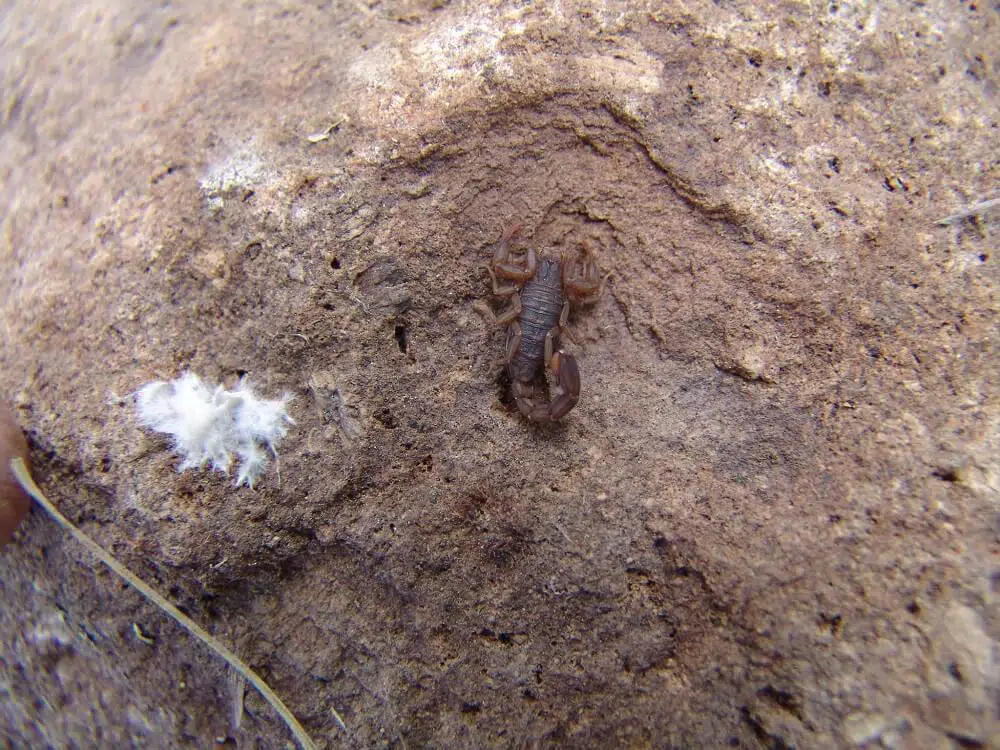
Scientific name: Vaejovis cashi.
Common name: Cash’s scorpion.
Cash’s scorpion is a member of the Vaejovidae family and is endemic to Arizona, found in the Chiricahua mountains in Cochise county.
They are not often observed and tend to stay hidden during the heat of the day, coming out at night to hunt for prey.
11. Vorhies’ Scorpion
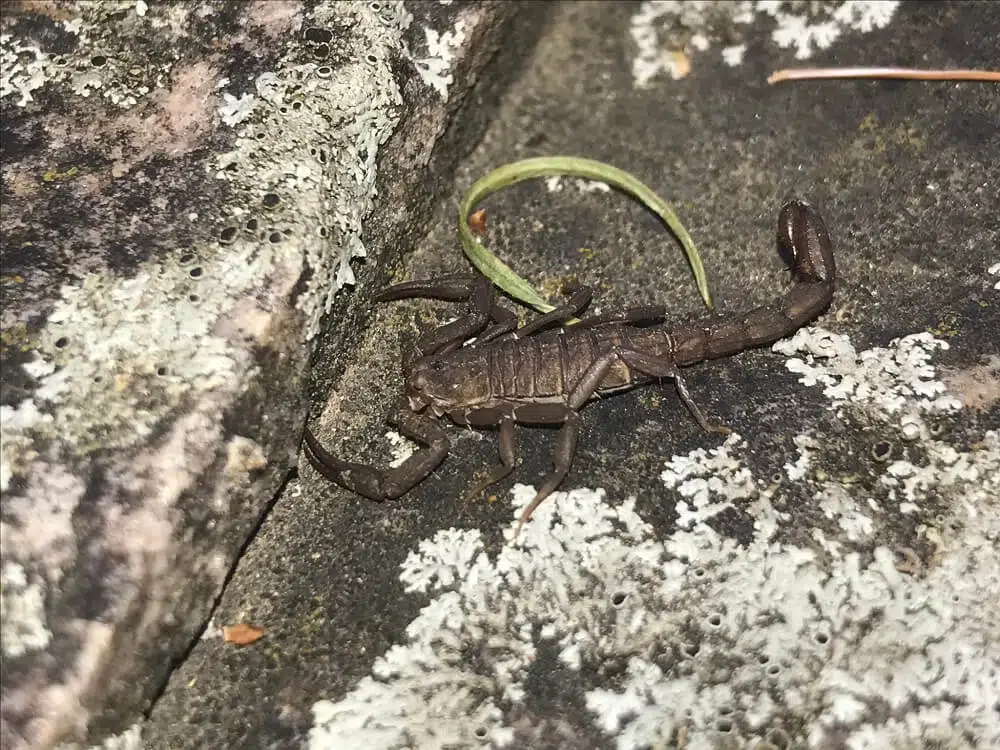
Scientific name: Vaejovis vorhiesi.
Common name: Vorhies’ scorpion.
This small scorpion is also a member of the Vaejovidae family and also endemic to Arizona.
They are found in the Huachuca Mountains in Cochise County where males grow to 2.6cm and females to just over 3cm.
12. Vaejovis deboerae
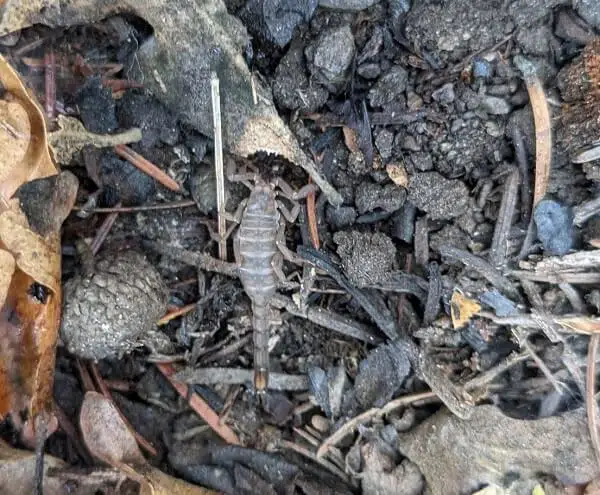
The Vaejovis deboerae is a member of the Vaejovidae family, which was discovered in the Santa Catalina Mountains in Arizona in 2013.
This is the tenth mountain scorpion discovered in Arizona and the second species to inhabit the Santa Catalina mountains.
Females grow to 2.7cm in length and will carry up to 24 offspring on their back.
13. Stahnkeus Subtilimanus
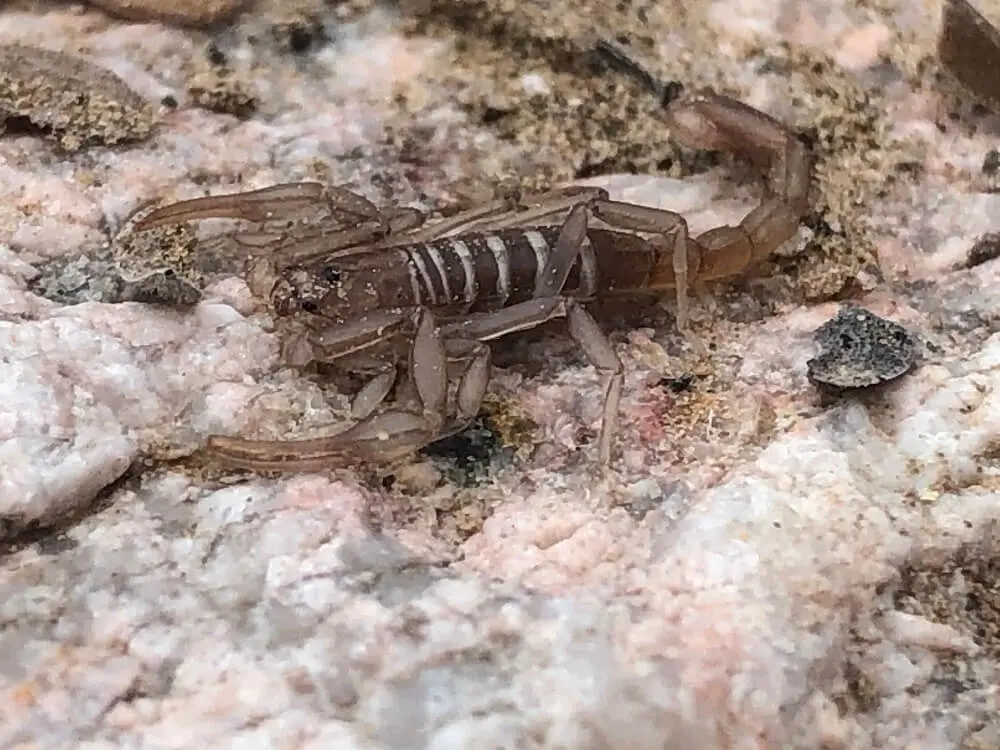
The Stahnkeus Subtilimanus is a member of the Vaejovidae family, found in southwestern Arizona with males growing to 3.5cm and females growing slightly larger to 41.8cm.
They hide under rocks and bark during the day, coming out at night to hunt for prey.
14. Vaejovis grahami
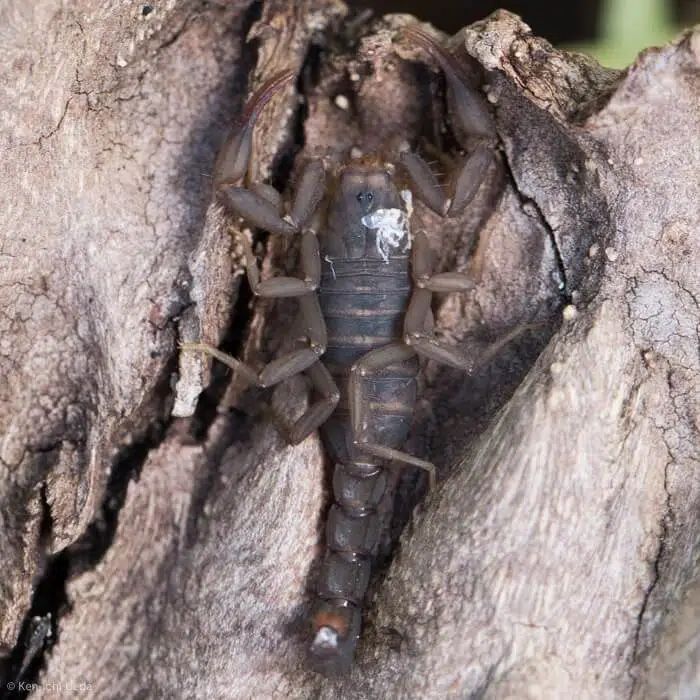
Vaejovis grahami is a new scorpion species, which is small and brown.
These scorpions have been discovered in the Santa Rita Mountains in Santa Cruz County, Arizona.
They’re very similar to the other southern Arizona species in terms of size and behavior.
15. Walnut Gulch Scorpion
Scientific name: Serradigitus miscionei.
Common name: Walnut Gulch scorpion.
The Serradigitus Miscionei is also known as the Walnut Gulch scorpion and is very rare, only found in southern Arizona. It is one of the three Serradigitus species in Arizona.
These are small, red to brown colored scorpions, with females growing to around 2.5cm in length, including the tail.
They were discovered in 2011 when searching for lizards on the walls of San Pedro River.
16. Black-back Scorpion

Scientific name: Hadrurus spadix.
Common name: black-back scorpion.
The black-black scorpion is a large scorpion native to the southern deserts in North America, growing up to 5.5 inches (15cm) in length.
This scorpion spends much of the day digging and making its burrow larger.
They are also popular pets with arachnid hobbyists.
They are very nervous and will show aggression if provoked. Their venom is low toxicity, though the sting can be exceptionally painful.
17. Eastern Sand Scorpion
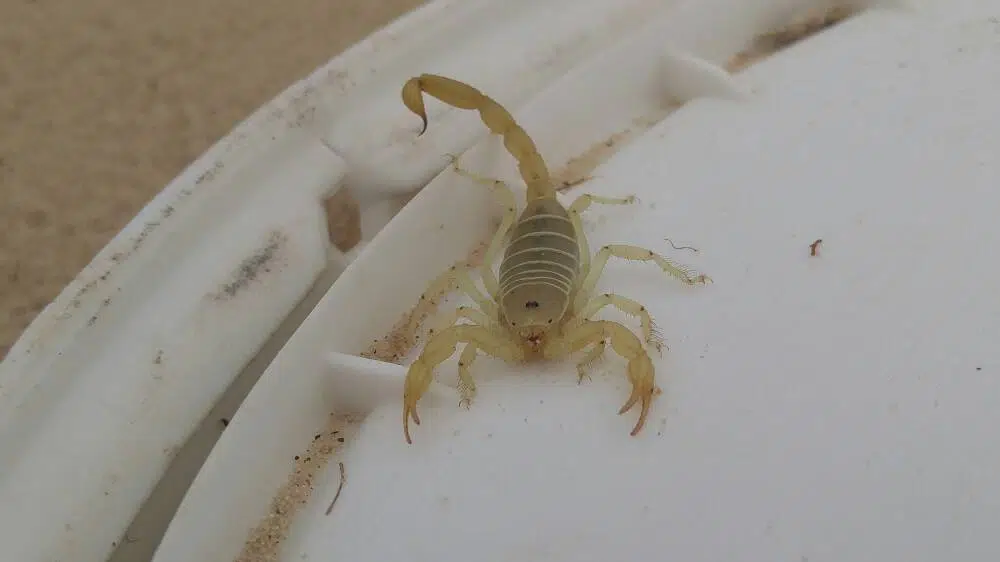
Scientific name: Paruroctonus utahensis.
Common name: Eastern sand scorpion.
The Eastern sand scorpion is yellow to yellow/brown in color, which helps it blend into the local sand.
They have swollen pincers and bristles on their legs, which gives them traction on the ground.
They prefer loose sandy soil and are burrowers. They usually dig their burrow at the bottom of vegetation on sand dunes.
They are members of the Vaejovidae family and can live up to seven years.
18. Russell’s Scorpion
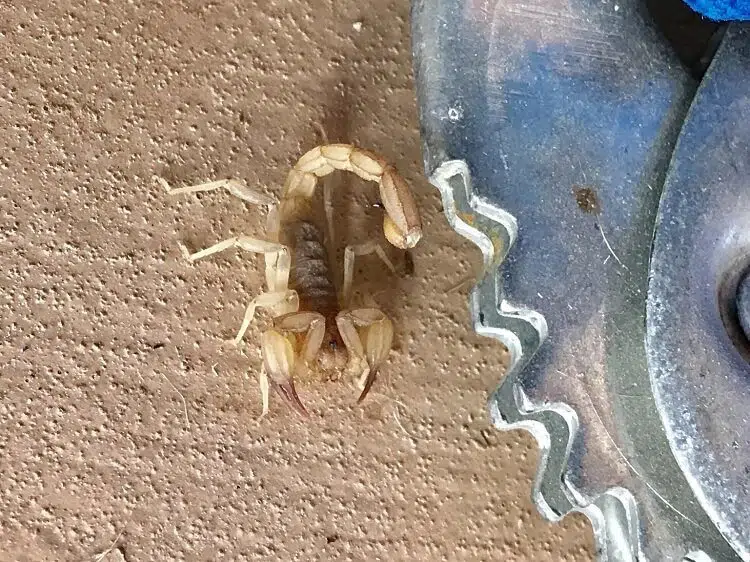
Scientific name: Chihuahuanus russelli.
Common name: Russell’s scorpion.
Russell’s scorpions are a member of the Vaejovidae family and is endemic to the United States, where they can be found in Arizona, Texas, and New Mexico.
Males grow to 3.6cm, with females being larger and growing to 4.1cm.
19. Uroctonites huachuca
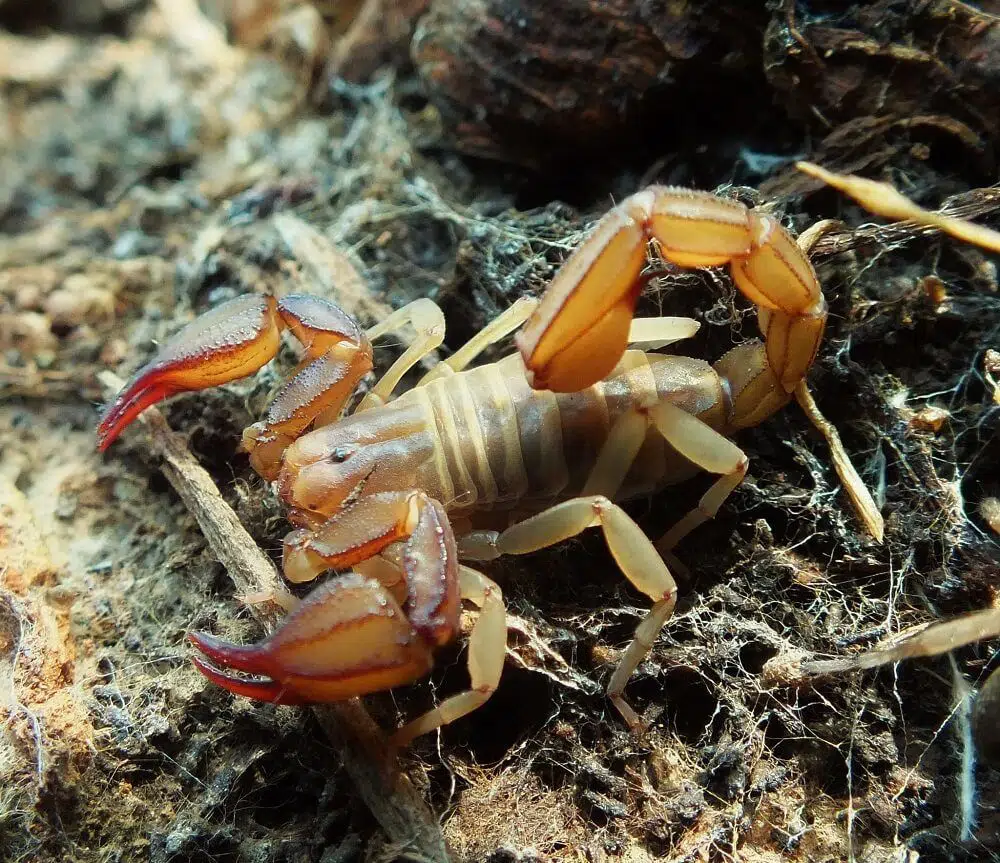
This scorpion is a member of the Vaejovidae family and is endemic to Arizona, where it can be found in the Santa Rita Mountains in Santa Cruz County and in the Huachuca Mountains in Cochise County.
Females are smaller than the male with females growing to 3.5cm and males growing to around 3.8cm.
20. Vaejovis brysoni
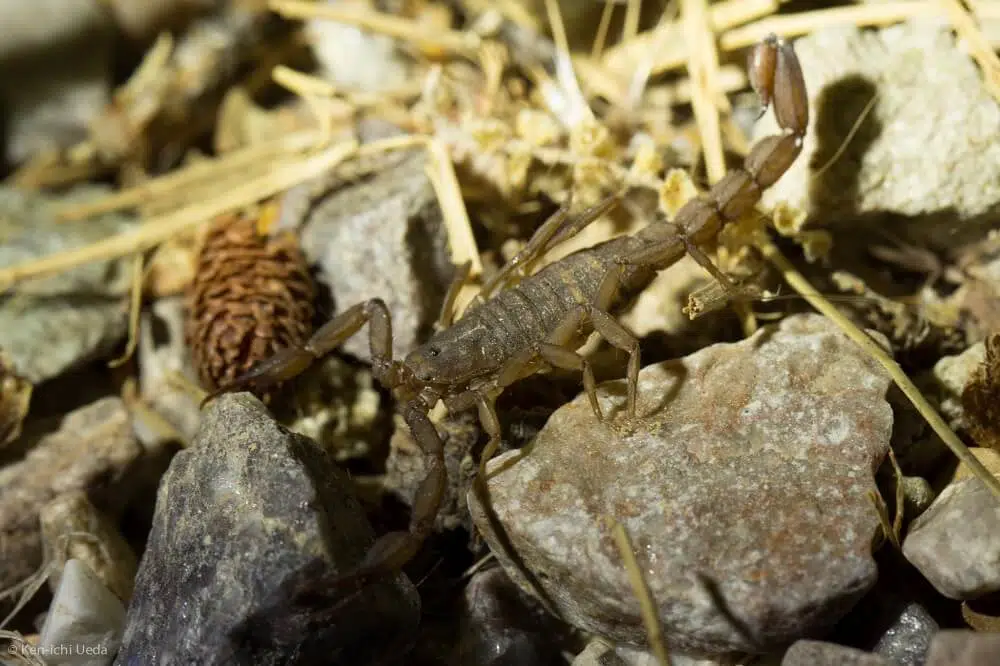
This scorpion, which is a member of the Vaejovidae family, was first discovered in the Santa Catalina Mountains in Southern Arizona in 2013.
These are small scorpions with females growing to 1.08 inches (2.75cm) and like other scorpions, she will carry up to 24 offspring on her back at any time.
Arizona has numerous isolated mountain habitats where these new species are being discovered. There are now ten mountain species which have been discovered, compared to the four which were known about only 15 years ago and they all belong to the same scorpion family.
21. Vaejovis electrum
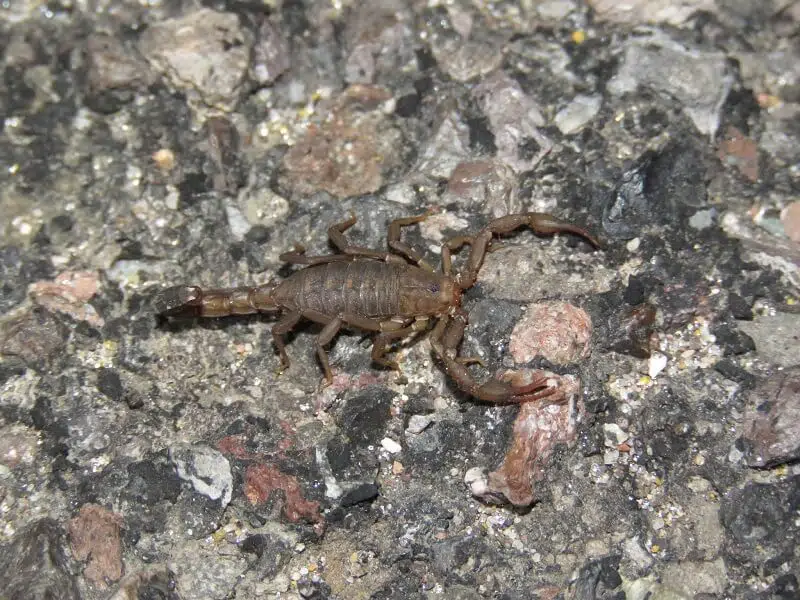
Vaejovis electrum is a member of the Vaejovidae family and is endemic to Arizona and can be found in the Pinaleno Mountains in Graham County.
Males can grow up to 4.3cm in total length, including the tail.
As with other Vaejovidae scorpions, they are burrowers, they hide during the day and come out at night to hunt for prey.
22. Stahnkeus allredi
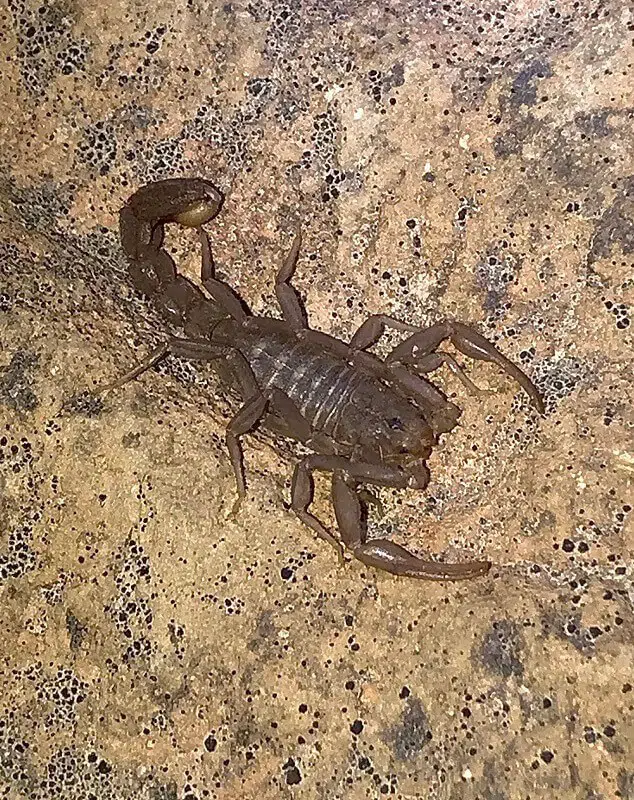
This scorpion can be found in Arizona and Mexico.
It is a member of the Vaejovidae family with females growing 1.85cm and males, being slightly larger, growing to 2cm.
They are nocturnal, prey at night, and hide from the sun and predators during the day in crevices under rocks, leaf litter, and tree bark.
23. Northern Scorpion

Scientific name: Paruroctonus boreus.
Common name: Northern scorpion.
The Northern scorpion belongs to the Vaejovidae family and has been seen in Canada during dry years.
In fact, it is the only scorpion in Canada, though it can be easily observed in Arizona.
They have a low toxicity sting, which will cause swelling, pain, and redness in the sting area. Use a cold compress to reduce swelling, which should ease within 24 to 72 hours.
24. Paruroctonus stahnkei
This scorpion, a member of the Vaejovidae family, can be found in Arizona and Mexico.
They are small scorpions with the female being very slightly larger than the male. Males grow to around 2.4cm, with females closely ahead at 2.5cm.
25. Kochius sonorae
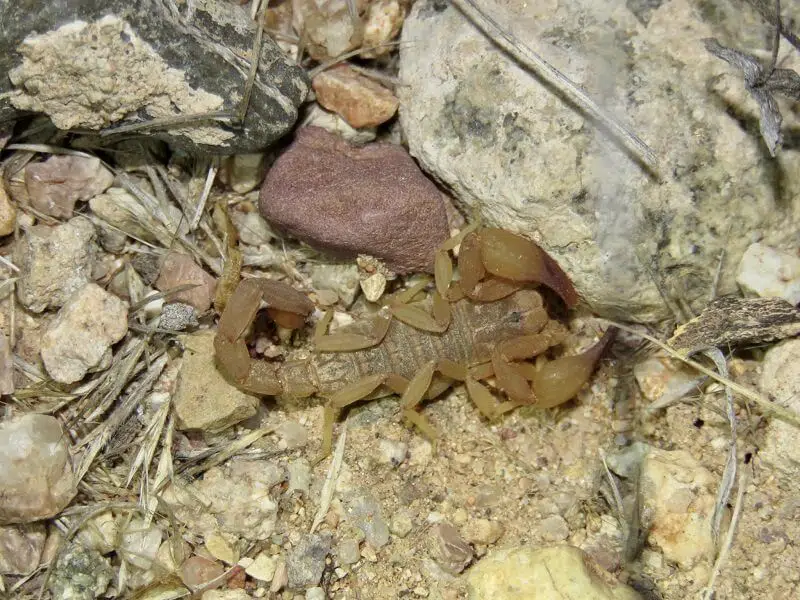
The Kochius sonorae is endemic to Mexico, but can also be found in Arizona.
As a member of the Vaejovidae family, males grow to around 2.8cm.
They have what is considered low toxicity, so they are not deadly to humans, though some people do experience an allergic reaction to the sting, the same as you would with a bee or wasp sting, which may require medical attention.
26. Thick-handed Scorpion
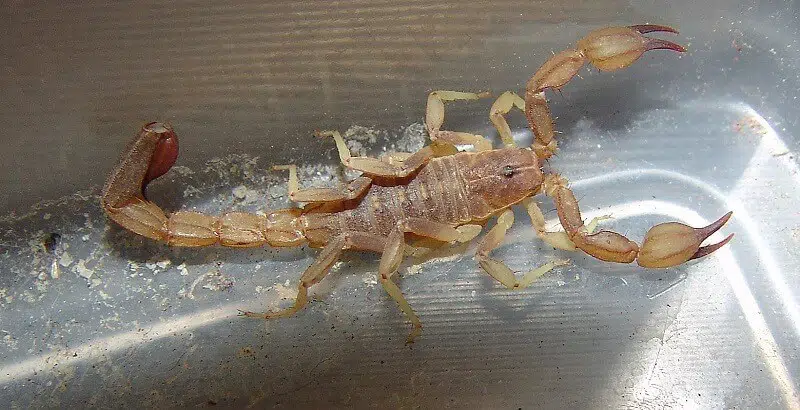
Scientific name: Chihuahuanus crassimanus.
Common name: Thick-handed scorpion.
The thick-handed scorpion can be found in Arizona and there have been a few observations to date. These are very shy scorpions and are not observed very often.
They are excellent burrowers and tend to only come out at night when they feel safe from predators.
27. Kochius hirsuticauda
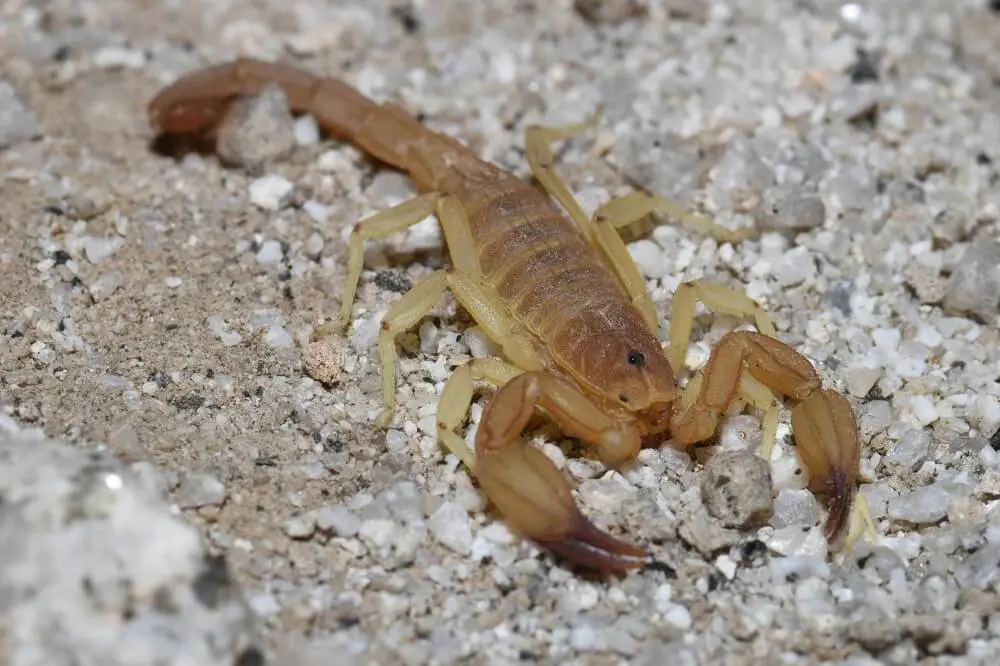
Kochius hirsuticauda scorpions can be found in the United States including Arizona, California, Nevada, and Utah. They can also be observed in Mexico.
They are small in size, growing to 3.2cm in total length.
They hide during the day and are usually only observed if disturbed.
If provoked they will use their stinger, which can be exceptionally painful to humans, but not deadly.
28. Paruroctonus gracilior
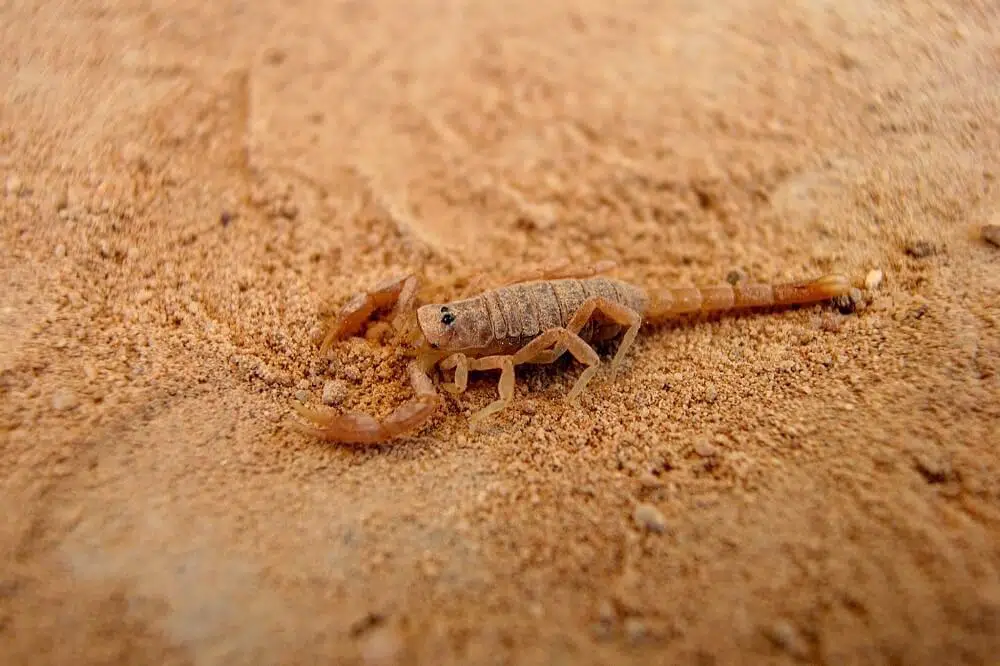
There are eight described Paruroctonus species in the Vaejovidae family.
A shy and nervous scorpion, which is rarely observed and remains hidden during the day to protect itself from predators.
29. Lesser Stripetail Scorpion
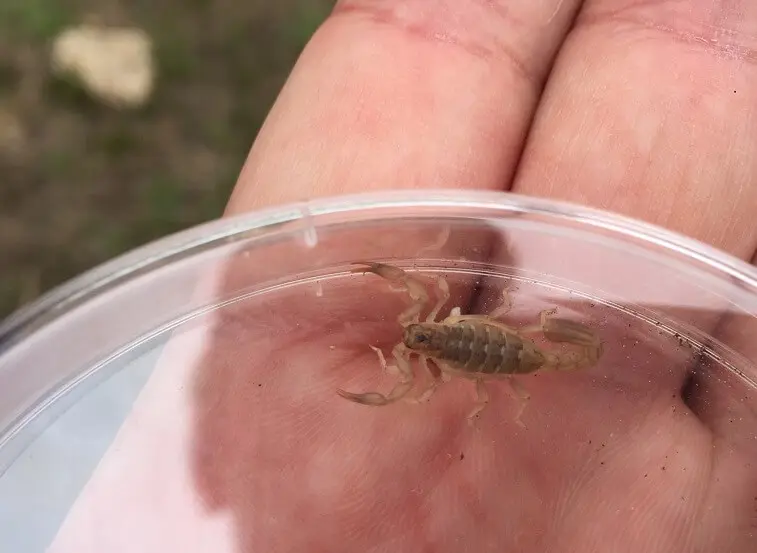
Scientific name: Hoffmannius coahuilae.
Common name: Lesser stripetail scorpion.
The lesser stripetail scorpion looks very similar to Vaejovis spinigerus and there is often confusion between the two.
This scorpion has a mottled carapace.
These scorpions can be found in southeast Arizona, close to the Chiricahua Mountains. They have also been observed in Texas, New Mexico, and northern Mexico.
30. Vaejovis paysonensis
The Vaejovis Paysonensis is a member of the Vaejovidae family and has been observed in the Barbershop Canyon, in Cochino County, Arizona.
These small scorpions are rarely observed and tend to be shy and nervous by nature.
31. Vaejovis crumpi
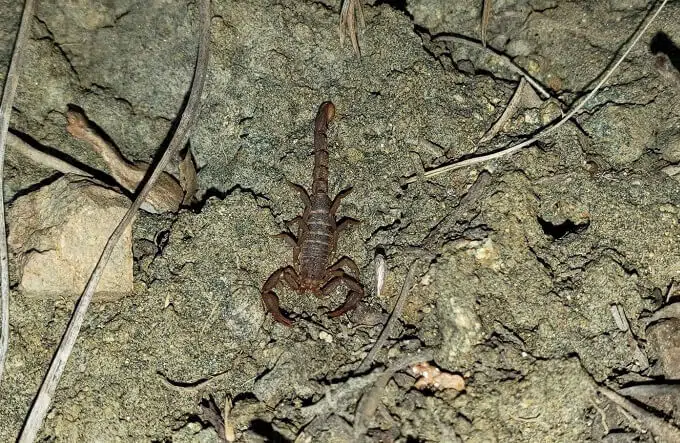
Vaejovis crumpi is a small brown scorpion which is found near Yarnell in Arizona.
It is also a member of the Vaejovidae family and tends to remain very well hidden under rocks, tree bark, and leaf litter during the day, blending into its surroundings and making it hard to observe.
32. Serradigitus wupatkiensis
The Serradigitus Wupatkiensis is a sawfinger scorpion and a member of the Vaejovidae family.
There are more than twenty species described in the Serradigitus family.
These scorpions are often observed in Arizona, hiding under wood piles, rocks, leaf litter, and tree bark.
They have a painful sting, which is similar to a bee sting and tends to heal after 24 to 72 hours.
33. Pseudouroctonus kremani
Pseudouroctonus Kremani is a member of the Vaejovidae family and is endemic to Arizona, where it can be found in the Santa Catalina Mountains in Pima County.
Females are larger than the male, measuring up to 3.24cm with males reaching 2.48cm.
34. Gertschius fragilis
Gertschius fragilis is a member of the Vaejovidae scorpion family found in Arizona and New Mexico in the United States with males growing to 1.66cm and females growing to 2.28cm.
They tend to spend most of their day in burrows or hiding in crevices, staying away from predators.
35. Wernerius mumai
There are very few observations of the Wernerius Mumai scorpion in Arizona, as it remains a shy and nervous scorpion that is very difficult to observe.
It is excellent at hiding and remains hidden for most of the day until the sun sets and they feel safe to come out and hunt.
36. Vaejovis patagonia
The Vaejovis Patagonia is a new scorpion species, which is dark brown and has been discovered near Patagonia in Arizona. It is found near the Patagonia Mountains
37. Beck’s Desert Scorpion
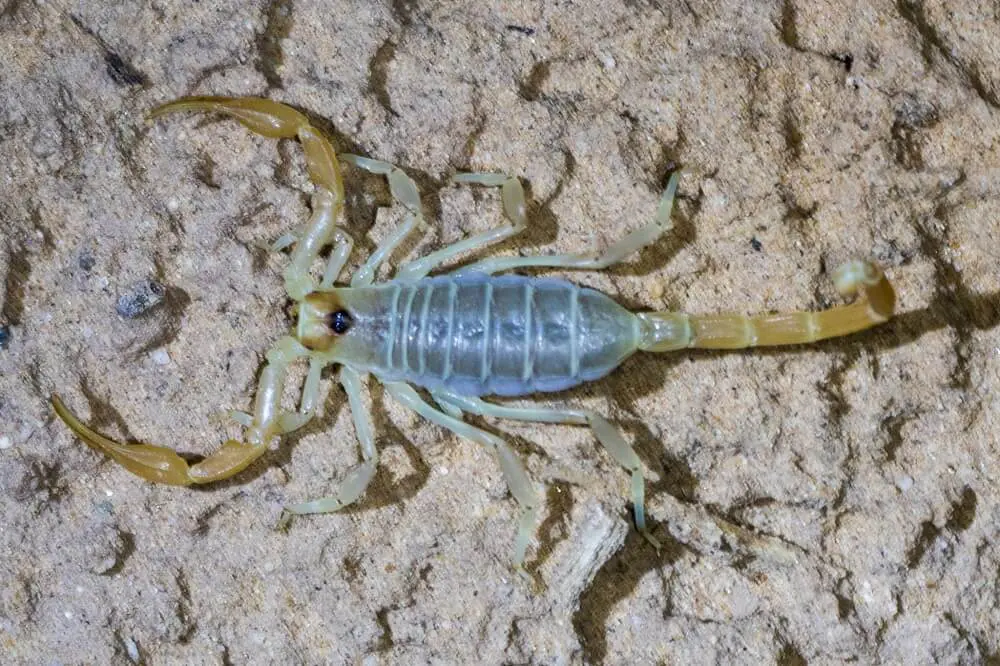
Scientific name: Paruroctonus becki.
Common name: Beck’s desert scorpion.
Beck’s desert scorpions were discovered in 1965 and are common in the dry and arid regions of Arizona.
This desert scorpion tends to burrow at the base of vegetation in the desert, hiding from the sun during the day.
38. Vaejovis lapidicola
There is very little information on the Vaejovis Lapidicola, which is a small scorpion and member of the Vaejovidae family, which tends to burrow during the day and hunt at night.
Further Reading: